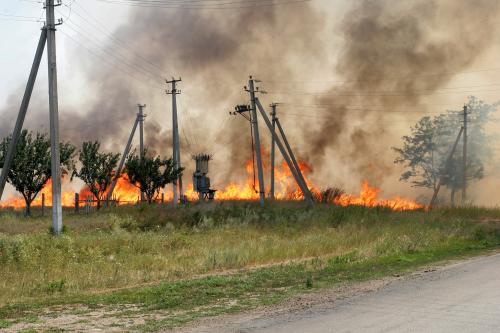Two Oklahoma Republican senators, Jim Inhofe and Tom Coburn, are rolling a decade-old gas-guzzler out of the garage: Human activity is not driving us toward a dangerously warmer climate. Fortunately, the Inhofe-Coburn wing of the Republican Party is no longer the mainstream.
Indeed, over the past decade, the evidence for human-induced climate change has become one of the most widely accepted scientific findings of our time. Inhofe and Coburn are like soldiers climbing out of caves to fight a war that their generals long ago surrendered.
Most of the old battlefields are deserted. In 2002, the infamous Global Climate Coalition “deactivated” (according to its website), thanks in part to the loss of key energy and auto company supporters. In a telling example of how quickly things changed, an Exxon-Mobil representative now says: “We know enough now — or, society knows enough now — that the risk is serious and action should be taken.” That was John McCain’s position, too, as well as that of a growing number of Republicans and most major energy and auto companies.
Today, an entirely new war is under way. It is no longer about whether man-made climate change is real. It is about how aggressively, and in what ways, Americans should respond to that threat.
The latest front in this new war emerged two weeks ago when House Democrats installed Rep. Henry A. Waxman (D-Calif.) — long a champion of fast action on climate change — as chairman of the Energy and Commerce Committee, displacing Rep. John Dingell (D-Mich.).
Still, many battles remain to be fought. The economic crisis has emboldened opponents of aggressive climate action. The Dingell wing of the party — and others to its right — may wonder whether they have the public support or the resources necessary to take bold action. Whatever their substantive differences, however, both liberals and moderates will clearly need one another to pass viable climate legislation in the next Congress.
As this new front continues to unfold, all eyes will be on the White House. Throughout the campaign, Barack Obama consistently ranked energy security, including the fight against climate change, as his top priority after addressing the financial crisis. Moreover, the president-elect seems especially committed to avoiding traditional partisan battles — in this case, one that pits environmental hopes against economic fears. He believes that it is possible to confront climate change without undermining our larger economic agenda. The good news is that sound policy can do just that.
A comprehensive and economically sensible approach should have four parts. First, it must create certainty about long-run carbon prices — the key drivers of investment. President-elect Obama’s long-run goal of cutting emissions 80 percent below current emissions by 2050 is broadly consistent with what most scientists tell us will stabilize the climate at safe levels. That should remain the president-elect’s top priority.
Second, near-term targets — emissions targets for the next decade — are also important, but the near-term costs of achieving these targets should be monitored. The targets must be sufficiently stringent to send an appropriate price signal to companies investing now, but the legislation should also include provisions to contain near-term costs in case advanced technology turns out to be less plentiful than anticipated.
Third, a compromise is possible on how cap-and-trade is established. In what is bound to be one of the most contentious issues in this debate, the Waxman wing of the party will want to auction all emissions permits to generate revenue that can be returned to consumers and invested in clean technology. At the same time, energy and manufacturing industries will either want some of these permits allocated to them for free or will expect large rebates in order to offset the new costs imposed on them. Such a compromise is possible but is advisable only if the share allocated to industry is small and allowed to shrink over time to prevent large windfalls.
Finally, a bipartisan climate bill would acknowledge the reality of the international climate debate. The U.S. must take the first step in order to demonstrate leadership, but it also must make clear to other major emitters that they, too, must act. The U.S. should make climate change a central part of its strategic dialogue with China and a part of its partnership with India. Such engagement will lessen concerns over domestic competitiveness and ultimately lead to a more inclusive and effective agreement.
The days of the global warming deniers are long gone. The new era will be defined by how well Obama navigates, and ultimately defuses, a complex congressional minefield. Because the best policy is a lasting policy, climate enthusiasts would do well to look toward the political center. While Waxman has said that the window for action comes along only once in a generation, he and others must also realize that the final product must endure even longer.



Commentary
Op-edHow Obama Should Confront Climate Change
December 2, 2008